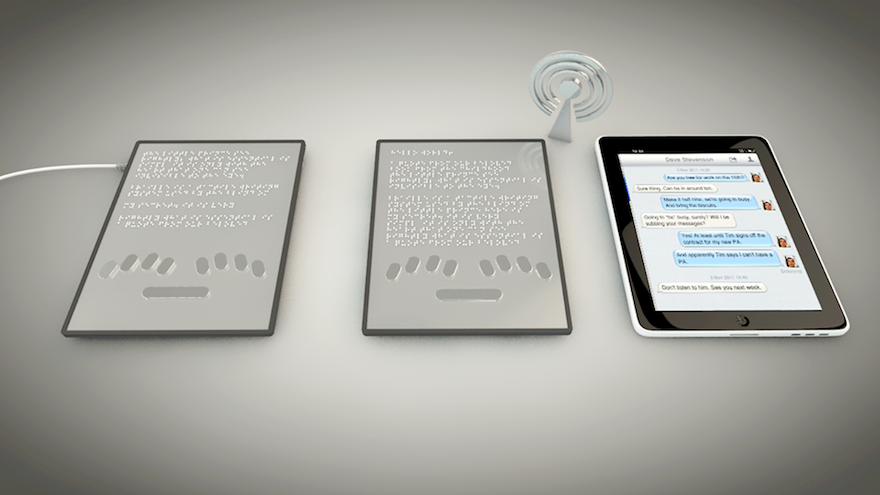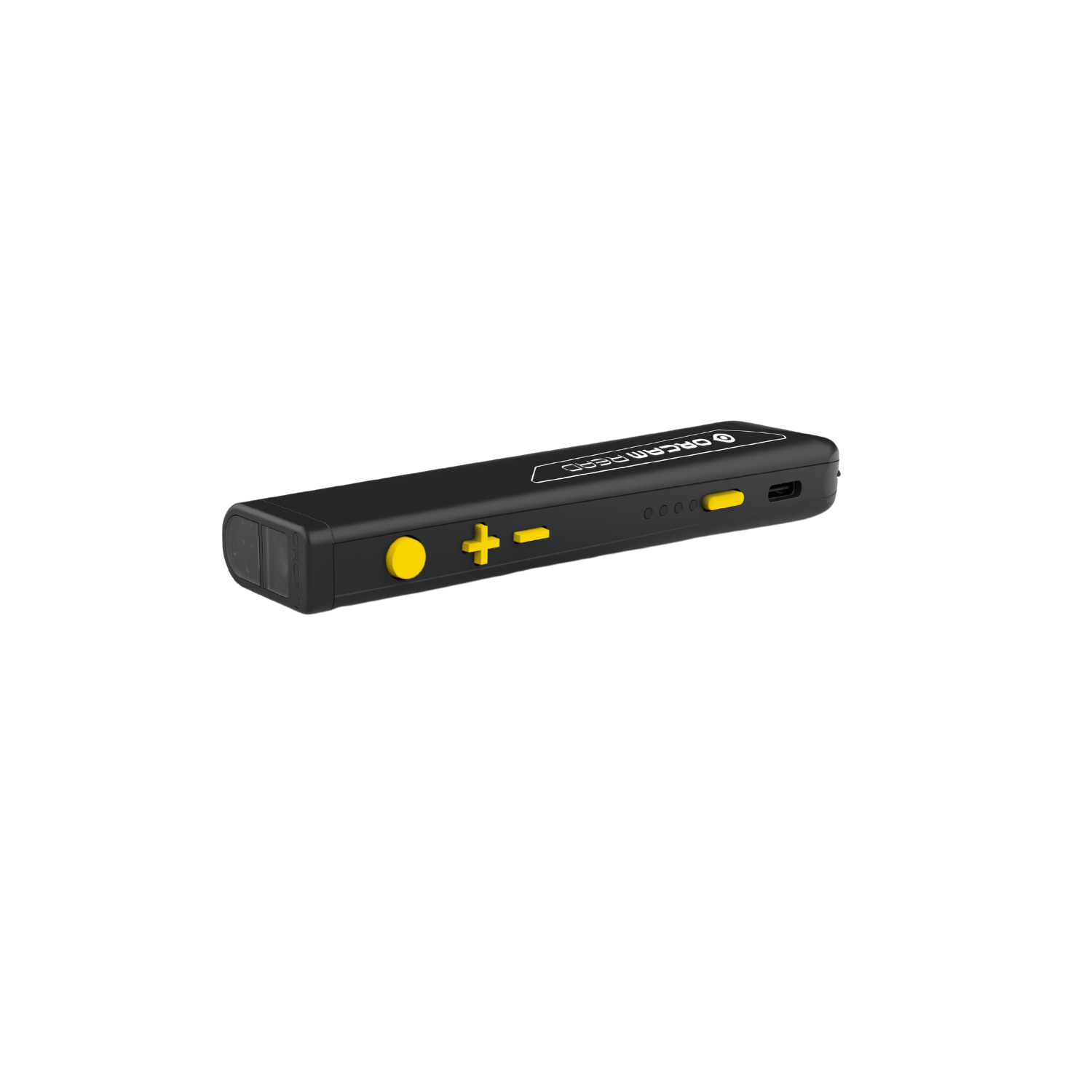Enhancing Lives With Advanced Assistive Tools for the Blind
The integration of innovative assistive tools for the blind is transforming exactly how people experience their surroundings and communicate with their areas. Developments such as enhanced truth wise glasses and sophisticated electronic traveling help not only assist in navigation however also boost general lifestyle. These innovations foster a sense of autonomy and self-efficacy amongst individuals, enabling them to undertake daily jobs with newly found confidence. Nevertheless, the effects of these developments expand past simple performance; they test social understandings of special needs and independence. What does this development mean for the future of assistive technology and its function in encouraging individuals?
Review of Assistive Instruments
Assistive gadgets for the blind include a varied variety of devices and innovations made to boost self-reliance and improve the top quality of life for people with visual impairments. These tools satisfy different needs, from navigation and wheelchair to interaction and daily job management.
Among the main categories of assistive devices includes movement help, such as white walking sticks and overview pets, which aid individuals navigate their surroundings securely. Electronic traveling help, furnished with sensors and audio comments, also play a substantial role in movement improvement.
Additionally, devices that aid with day-to-day living activities, such as flexible cooking area tools, Braille tags, and talking watches, empower individuals to execute jobs independently. Communication aids, including screen viewers and Braille display screens, promote access to info and make it possible for individuals to involve properly with the electronic world.
In addition, low-tech services like magnifying glasses and large-print materials continue to be vital for lots of customers. Jointly, these assistive tools serve not only as useful devices however additionally as essential enablers of autonomy, cultivating better participation in a world that usually focuses on sighted experiences. Their assimilation right into life is necessary for advertising inclusivity and enhancing general well-being for those with visual disabilities.
Innovative Technologies in operation
Development in innovation has dramatically changed the landscape of tools available for individuals with visual disabilities. Among one of the most noteworthy developments are clever glasses incorporated with enhanced truth, which give real-time navigating help and item recognition. These tools take advantage of progressed cams and synthetic intelligence to deliver acoustic cues, enhancing the customer's spatial understanding and autonomy.
Additionally, mobile applications have actually arised as powerful resources, enabling customers to recognize currency, read text out loud, and navigate unfamiliar environments via spoken guidelines. Tools such as Braille screens and refreshable Braille devices proceed to develop, providing seamless connection with mobile phones and computer systems, consequently improving communication and accessibility to information.
Wearable modern technology, including smartwatches furnished with voice-activated functions, even more encourages customers by assisting in fast accessibility to notifications and informs without calling for visual interaction. Tactile maps and 3D printing are also obtaining grip, offering concrete representations of areas that help in alignment and wheelchair training.
Jointly, these ingenious technologies not only improve the day-to-days live of visually damaged people yet likewise foster higher freedom, inclusivity, and involvement with the broader community, thus improving perceptions of ease of access. (Smart glasses for the visually impaired)
Personal Stories of Empowerment
Empowerment commonly emerges from individual experiences that highlight the transformative influence of technology on individuals with visual disabilities. Take, for circumstances, the tale of Sarah, a young musician who restored her passion for painting with the usage of a smart walking cane equipped with barrier discovery. This device not just promoted her wheelchair however instilled a newfound self-confidence, enabling her to navigate public areas independently and pursue her creative undertakings.

These narratives emphasize the profound results that advanced assistive gadgets can have on day-to-day live. By enabling people to conquer obstacles, innovation cultivates a feeling of autonomy and self-regard. Such empowerment tales act as a testament to the possibility of innovation, highlighting how the right tools can considerably boost lifestyle and open doors to brand-new possibilities for those with visual disabilities.
Advantages of Advanced Solutions
How can advanced solutions basically boost the lives of individuals with visual problems? The assimilation of innovative technology right into assistive gadgets substantially transforms everyday experiences for those affected by vision loss. These sophisticated services supply extraordinary autonomy, enabling customers to browse their environments with read the full info here self-confidence. Gadgets such as smart walking sticks equipped with sensors, navigation applications, and wearable modern technology are created to supply real-time comments, enhancing spatial recognition and minimizing the threats connected with mobility.
Furthermore, advanced assistive technologies foster social addition by assisting in communication and interaction. Voice-activated gadgets and apps enable people to accessibility info and involve with their environments separately, damaging barriers that previously hindered their participation in instructional, expert, and social setups.
Additionally, the personalization and flexibility of these solutions provide to the varied demands of users, therefore improving their overall lifestyle. Enhanced capability, such as things recognition and text-to-speech capacities, encourages individuals with visual disabilities to do jobs that they may have as soon as located testing. Eventually, advanced assistive modern technologies not only improve independence and safety and security but additionally promote self-respect and self-worth, allowing america glasses users to lead satisfying lives.
Future Fads in Assistive Tech
As technology continues to develop, the landscape of assistive devices for the blind is poised for impressive advancements that will further boost ease of access and freedom. Arising trends in assistive modern technology suggest a shift toward raised integration of expert system (AI) and artificial intelligence, enabling gadgets to adjust to private customer needs in real-time. These developments are expected to assist in more instinctive navigation systems that can identify barriers and provide audio comments, considerably boosting exterior wheelchair.
In addition, the development of wearable technology, such as wise glasses furnished with enhanced fact, will allow customers to get contextual details regarding their environments, therefore enhancing their spatial understanding. Improvements in haptic modern technology assurance to view publisher site produce responsive feedback gadgets, permitting customers to perceive info with touch, boosting discovering and communication with their setting.
Telecommunication advancements are also leading the way for remote help options, where qualified experts can supply assistance using video calls, making sure support is readily obtainable. As these fads unfold, the future of assistive tools for the blind will most certainly foster better autonomy, empowering people to browse their world with self-confidence and simplicity.

Final Thought
The integration of innovative assistive tools for the blind represents a significant innovation in fostering independence and enhancing quality of life. By utilizing innovative modern technologies, these tools encourage users to navigate their settings with greater self-confidence and autonomy. As the field remains to develop, recurring study and growth will likely generate much more advanced services, better transforming the lived experiences of people with visual disabilities and advertising a higher feeling of addition within culture.
The combination of advanced assistive tools for the blind is changing how individuals experience their environments and engage with their neighborhoods. The assimilation of sophisticated technology right into assistive devices significantly transforms everyday experiences for those affected by vision loss.As innovation continues to evolve, the landscape of assistive tools for the blind is positioned for impressive improvements that will certainly further enhance accessibility and independence. Arising trends in assistive technology suggest a change toward enhanced integration of synthetic intelligence (AI) and equipment discovering, allowing devices to adapt to specific customer needs in real-time.The integration of advanced assistive tools for the blind represents a considerable improvement in promoting independence and boosting high quality of life.